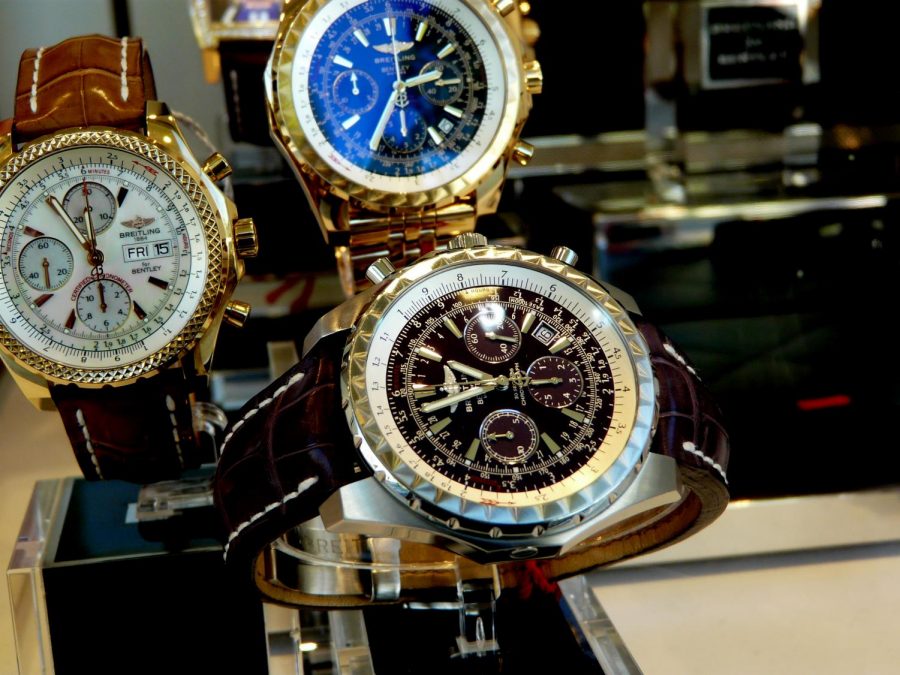Nowadays by a turn of the wrist, we’re able to see our heart rate, text messages and even GPS, but this wasn’t always the case. This only became “the case” in the past decade, but what preceded these new, flashy wrist watches are timepieces that hold so much more value, both sentimental and monetary. I received my first watch as a gift from my parents the night of my high school graduation; a two-tone swiss quartz Tissot, thin as paper and light as a feather. It’s the perfect mix of simple, classy and casual. Ever since then, I’ve begun to appreciate the artistry and tradition that goes into every watch I come across. In my time learning about classic watches I’ve come to realize that simplicity almost always beats functionality.
Practicality and style are two key components that should be considered when shopping for traditional watches. What makes a watch practical is that it doesn’t try to achieve too much, it makes you look good and it has a nice design and it tells the time. Traditional watches, from Timex to Patek Philippe, don’t add heart rate detectors and Bluetooth connection to their pieces because that distracts from the purpose of the watch. In contrast to smartwatches, traditional watches achieve more by doing less. A smartwatch that does everything a cell phone does is not a watch. It’s a smaller, less expensive smartphone.
The purchase of smartwatches begins to invalidate the dynamic and stylistic approaches that go into traditional watchmaking, which came long before smartwatches and will be here long after. Furthermore, traditional watches almost always beat smartwatches in the game of functionality because you don’t have to charge an analog watch. Most traditional watches have one of three movements: manual, automatic and quartz. Manual watches must be wound, automatic watches wind themselves (as the wearer moves) and quartz watches use a battery and a quartz crystal to tell time. These are just the three most popular movements, with each brand introducing their variation of the three to stand out from other watchmakers, like Citizen’s “Eco-Drive” which is solar-powered.
One common misconception when it comes to watch buying is that you must spend a lot to get a little. Lower-end watch brands like Casio and Citizen provide wearers with a classy, simple look for usually under $300. What’s great about watches like these is there’s a different style for every occasion; the beach calls for dive watches, while weddings call for a classy leather look. Smartwatches have just about one look with an LED face and the one form of variation in band type. Traditional watch buying is essentially car shopping for the modern metrosexual. The more you spend, the more complications (watch functions beyond time-telling) your watch will have, but mid to low end watches give wearers all the practical and stylistic features of more expensive watches without the big price tag.
When it comes to big price tags, however, it’s best to look at some watches as an investment rather than an everyday purchase. Watch brands like Omega, Tag Heuer and Rolex offer several styles worth the pretty penny if you plan on keeping them for a while. For example, a starter watch from each brand, like an “Omega Diver,” is around $2,300 while a “Rolex Oyster Perpetual” will set you back just above $5,000. What makes watches like these an investment opposed to just another flashy purchase is not that simple though. The “Rolex Daytona Ref. 6239” is a watch that couldn’t sell in the 1960s, so Rolex halted manufacturing on it. A year after halting production Paul Newman, famed actor and racecar driver, began wearing one, which got everyone asking: “Where can I get one?”
The answer is tricky; there is no surefire way to tell that your watch might blow up in 50 years because a celebrity wore it, but it’s general watch knowledge that if you purchase a nice watch it will hold value. Traditional watches and well-known pieces of art are alike in that they only get better with time. “Vase with Fifteen Sunflowers” by Vincent Van Gogh sold for $39 million in 1987, which has an inflated value of just under $90m. In the same boat, the “Patek Philippe Grandmaster Chime Ref. 6300A-010,” which has 20 complications (yes, that’s a lot), sold for $31 million in 2019. If the value of this watch appreciates similarly to this painting, granted that Patek Philippe earns the same respect in watches as Van Gogh has in paintings, then 20 years from now this same watch will be pushing $50 million. Needless to say, no smartwatch will ever hold value like this because they are mass-produced and can be worn by anyone. If anything, smartwatches, no matter how pricey, lose value the moment they’re purchased because they’re so accessible and easy to find.
It’s your choice what you chose to wear on your wrist, but if you’re ever in search of something classic and classy, a traditional watch is the way to go.
Maxwell Schwartz is a Collegian columnist and can be reached at [email protected].





















PRECIOUS • Jul 29, 2020 at 11:58 am
Those rest watches are really nice. Each of them has different way of telling the time. I prefer those rest watch that are made out of leather handle not the ones made with iron cause the once made with iron hut the skin and leave scar. I really love watches. Thanks for this article.